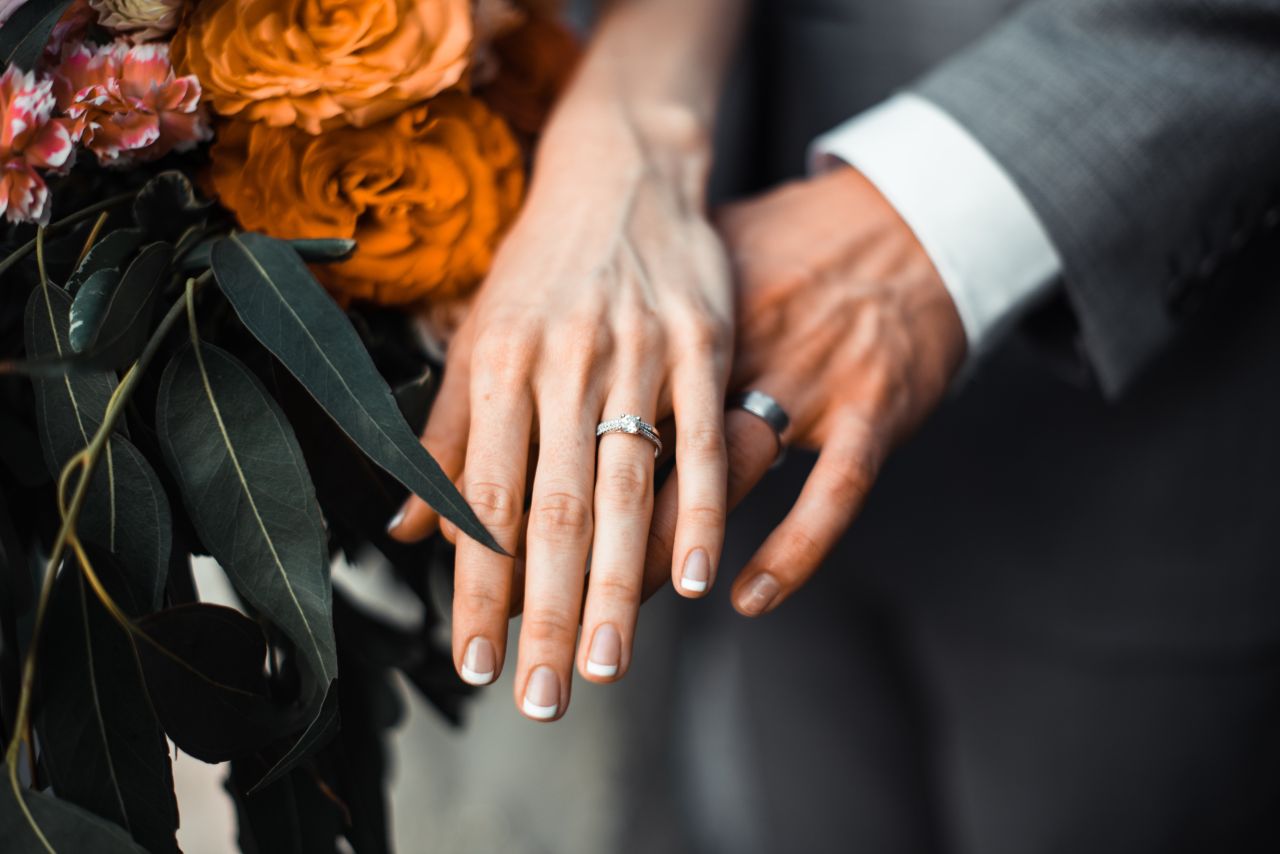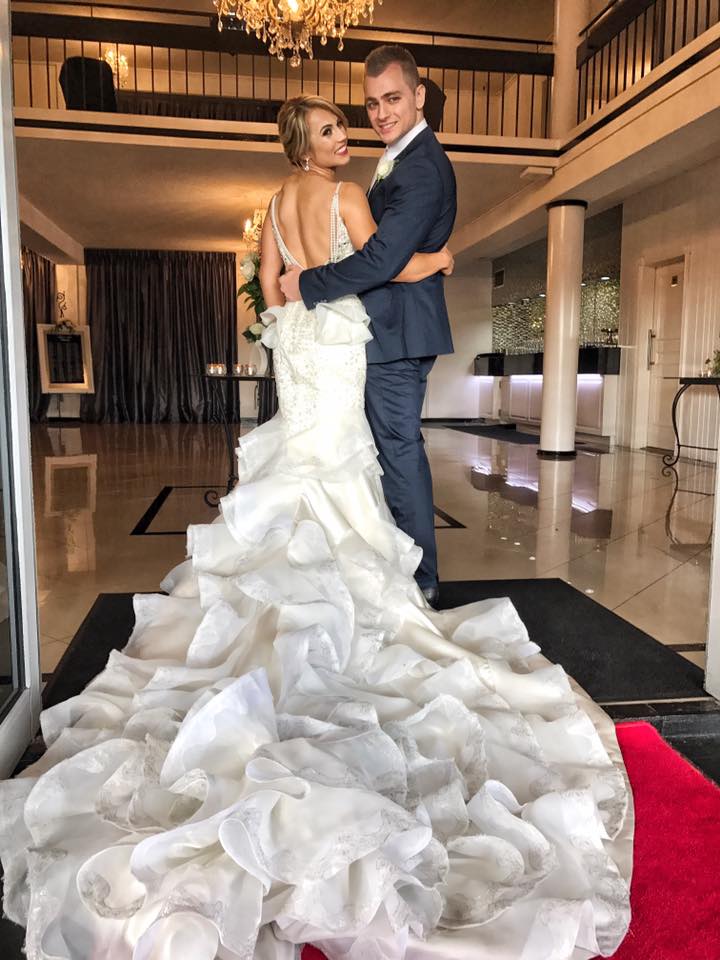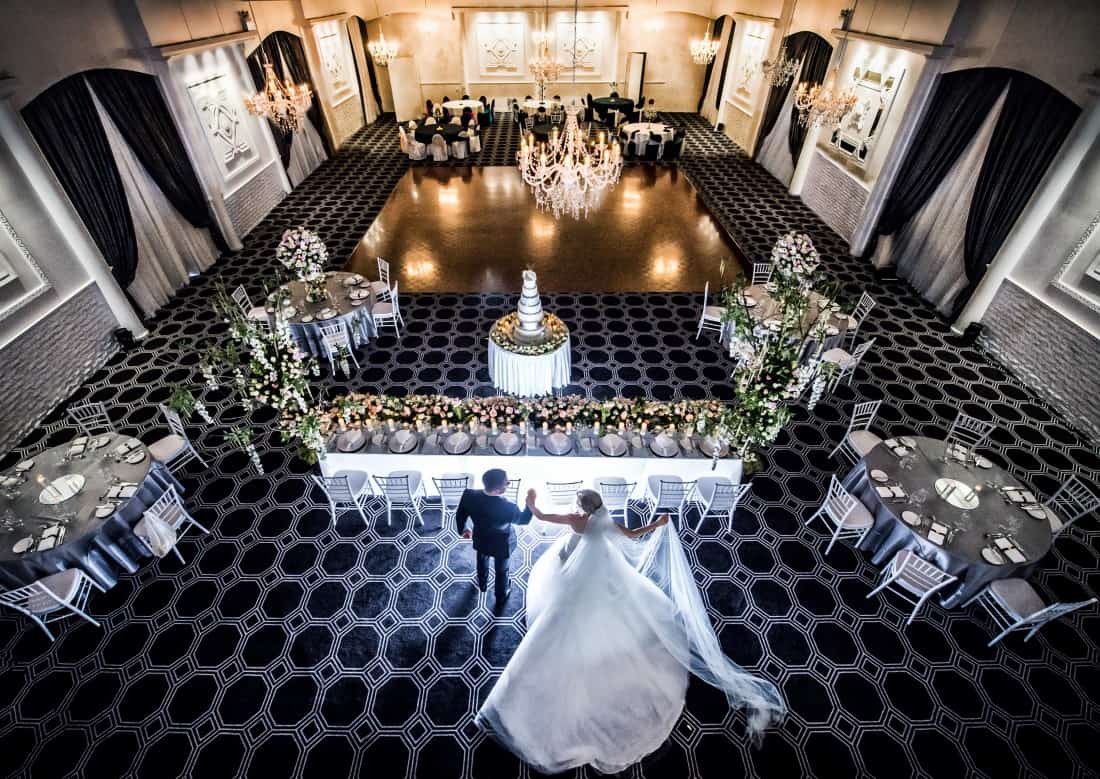Planning a Jewish wedding is an exciting and meaningful experience, and I remember working with a couple who wanted to honour their traditions while creating a day that reflected their love story.
From the moment they started planning, it was clear that this wasn’t just a wedding—it was a celebration of faith, family, and culture. The couple was eager to include key Jewish wedding customs like the Chuppah and the Ketubah, but they also wanted to put their personal touch on every detail.
Navigating the intricacies of Jewish wedding traditions can be overwhelming, but it’s a journey worth taking. I’ll walk you through the essential steps of planning your Jewish wedding, sharing the lessons I’ve learned along the way, and offering practical advice to make sure your celebration is both meaningful and unforgettable. Let’s explore how you can make your Jewish wedding truly special.
Key Steps to Planning Your Perfect Jewish Wedding
Choosing the Right Date for Your Jewish Wedding
I once worked with a couple who were excited to have their Jewish wedding at Vogue Ballroom. They had their hearts set on a spring celebration, but when they started looking at dates, they quickly realised there were some restrictions they hadn’t accounted for.
Jewish weddings have specific times when they can’t take place, such as on Shabbat (the Sabbath), Jewish holidays like Rosh Hashanah or Yom Kippur, and certain other days like the three weeks between the 17th of Tammuz and Tisha B’Av.
This couple had to take extra care to make sure their chosen date was within Jewish law. After looking at a Jewish calendar and consulting with their rabbi, they found a perfect date. My advice? Always double-check the calendar early on. It can save you a lot of stress and make sure your wedding doesn’t fall on a day when celebrations are not allowed.
Hiring the Right Officiant for Your Jewish Wedding
When it comes to selecting the perfect officiant, you want someone who can guide you through the ceremony while making it feel personal and meaningful. I remember a couple who, like many others, had questions about what the rabbi would say during the ceremony. They wanted someone who understood their unique vision but still respected Jewish customs.
We spent a lot of time talking about the officiant’s style and approach. For couples who aren’t affiliated with a specific synagogue, it’s important to find a rabbi who can work with your preferences, especially when it comes to rituals like the Ketubah reading or the inclusion of certain blessings. In this case, we found a rabbi who was flexible and had a great rapport with the couple. We also made sure to book the rabbi early, as their schedule was packed, especially during peak wedding season.
Defining Your Vision and Values
Planning a wedding is a time to reflect on your relationship and what matters most to you as a couple. When I worked with this couple, we spent time discussing how to incorporate Jewish traditions while also staying true to their personal values. For instance, they wanted a ceremony that was meaningful to both families, but also had modern touches to reflect their lifestyle.
This is where Jewish wedding planning becomes really special—you get to blend tradition with your personal story. If you’re not sure where to start, I always suggest talking about the meaning behind each tradition. Why do you want to include certain elements like the Chuppah or Sheva Brachot? Understanding the “why” behind the customs can help you decide what resonates most with you and your partner.

Essential Jewish Wedding Traditions You Need to Know
The Chuppah: Symbolising Your Future Together
One of the first traditions that stands out in any Jewish wedding is the Chuppah. I had a couple who were absolutely captivated by the idea of exchanging vows under a wedding canopy, but they also wanted to put their personal touch on it. The Chuppah is more than just a decorative piece—it’s symbolic of the couple’s future home and a representation of God’s presence in their marriage.
For this couple, they wanted something simple but meaningful. They chose to have their Chuppah made from a beautiful piece of fabric that had been passed down in the family, tying together the old and the new. They decided to have close family members hold the poles, making the moment feel even more intimate.
The structure of the Chuppah can range from simple cloth canopies to more elaborate designs with flowers and family heirlooms, but no matter how it’s styled, it’s a central part of the ceremony that truly reflects the couple’s journey together.
The Ketubah: A Marriage Contract with Deep Meaning
A Jewish wedding is not only a celebration but a legal and spiritual contract between the couple. The Ketubah, the traditional Jewish marriage contract, holds significant weight in the ceremony. I remember when one couple I worked with was unsure about the importance of the Ketubah. Initially, they saw it as a formality, but as we dove deeper into its meaning, they realised it was much more than just a document.
The Ketubah outlines the groom’s responsibilities to the bride, but it’s evolved into a cherished piece of art for many couples. This couple decided to have their Ketubah custom-designed with an artistic version featuring their favourite quotes and symbols representing their love story.
They also added a beautiful translation of the text, which made it even more meaningful for their family and friends, some of whom were unfamiliar with the Hebrew language.
I can’t stress enough how important it is to personalise your Ketubah. It’s a document that you’ll likely keep and cherish for years to come, so it’s worth putting thought into how you want it to look and what it signifies for you both.
Jewish Wedding Ceremony Rituals That Will Shape Your Day
Circling and the Symbolism of Building a Wall of Love
One of the most memorable rituals in a Jewish wedding is when the bride circles the groom seven times. This tradition has deep roots in Jewish mysticism and symbolism. When I worked with a couple from Melbourne, they were curious about why this practice was so important. They wanted to ensure the ritual felt meaningful to them, not just as a tradition they were following without understanding.
I explained that the circling represents the creation of a protective “wall” around their relationship, symbolising love and unity. Seven is considered the most sacred number in Judaism, often associated with completion and wholeness.
For this couple, the bride circled the groom seven times, but in a twist, they also decided to circle each other at the same time. This modern adaptation was a beautiful way to reflect equality and mutual respect within their union.
The circling is followed by the reading of the Sheva Brachot (Seven Blessings), which adds an even deeper layer of joy and sanctity to the ceremony. Whether you follow the traditional way or make it your own, this ritual remains one of the most powerful moments of the Jewish wedding.
The Sheva Brachot: Seven Blessings for a Joyous Future
The Seven Blessings are a cornerstone of the Jewish wedding ceremony, recited over a second cup of wine after the betrothal and ring ceremony. Each blessing has its own significance, with themes of joy, creation, and the sanctity of marriage.
I had a couple who really wanted to make these blessings a personal experience. Instead of having just the rabbi recite them, they invited close family members and friends to read a blessing each, making the ceremony feel even more intimate and inclusive.
One of the most touching parts of this ceremony is how the blessings speak to the couple’s future. Themes of happiness, creation, and partnership are woven into each one. I remember the bride’s father, who recited a blessing with such love and emotion that it left a lasting impression on everyone present. The couple even decided to have their guests learn the blessings ahead of time, creating a sense of unity and participation.
If you’re looking to personalise your Sheva Brachot, consider including family members or friends in the ceremony. It’s a great way to honour your loved ones while deepening the spiritual connection of the ceremony itself.
Breaking the Glass: A Powerful Tradition with Multiple Meanings
As the ceremony draws to a close, one of the final moments is the breaking of the glass, often done by the groom (though sometimes the bride participates as well). This ritual can carry a variety of meanings. It symbolises the fragility of joy and the idea that even in the happiest moments, we must remember the destruction of the Temple in Jerusalem. For some, it’s a reminder that life is fragile, and moments of happiness should be treasured.
I recall a Jewish couple I worked with in Melbourne who had a very personal reason for the breaking of the glass. The groom’s family had experienced a great loss in the years leading up to the wedding, and for them, the glass symbolised that even in moments of joy, we must remember those who are no longer with us.
After the groom broke the glass, the whole room erupted in a resounding “Mazel Tov!”—a joyful exclamation that turned the emotional moment into one of celebration and unity.
Many couples choose to save the glass shards as a keepsake, sometimes turning them into pieces of Judaica or jewellery. This personal touch makes the ritual even more meaningful.
Pre- and Post-Ceremony Celebrations and Jewish Wedding Reception Ideas
The Hora: A Celebration of Joy and Unity
One of the highlights of a Jewish wedding is the Hora. I worked with a couple who were thrilled to include this tradition. The Hora is a lively circle dance where the couple is lifted on chairs while guests dance around them. It’s filled with energy, joy, and laughter, and often accompanied by traditional Jewish wedding music.
For this couple, the Hora became a major reception event. With a playlist of both traditional and modern songs, the energy in the room was infectious as everyone joined in. If you’re planning a Hora, make sure to get everyone involved—it’s a fantastic way to celebrate and bring your guests together!
Hosting a Meaningful Jewish Wedding Reception
For the reception, it’s all about balance—honouring Jewish traditions while having fun. The couple I worked with wanted a kosher menu and a space that reflected their cultural values but also felt modern. We worked with a kosher caterer to offer traditional Jewish dishes like brisket and latkes, while also mixing in contemporary options.
The decor was another important element, transitioning from the Chuppah to the reception space in a way that blended tradition with modern elegance. If you’re hosting a Jewish wedding reception, aim to create a space that honours your heritage while keeping the celebration fresh and enjoyable for all.

Practical Tips for Planning a Jewish Wedding
Budgeting for Your Jewish Wedding
When it comes to budgeting for a Jewish wedding, there are a few key areas where costs can add up quickly. I worked with a couple recently who were surprised at how much the catering and kosher food requirements impacted their budget. Kosher catering can be more expensive than regular catering, but it’s an essential part of the tradition.
This couple focused on prioritising the aspects that mattered most to them, like food and entertainment. We also worked out a detailed budget to ensure they could allocate funds to all the key elements of their wedding, including the Chuppah, photography, and a live Jewish wedding band for the reception. Setting a budget early on and sticking to it is crucial to avoid unexpected costs down the road.
Working with Vendors Who Understand Jewish Wedding Customs
One of the best pieces of advice I can give is to work with vendors who are familiar with Jewish wedding traditions. I once worked with a couple who wanted a photographer who understood the key moments to capture, like the breaking of the glass or the Sheva Brachot. Finding vendors who are experienced in Jewish weddings helps ensure everything runs smoothly.
From the photographer to the caterer, it’s important that your vendors understand the significance of each tradition and know how to capture it authentically. If you can, try to work with a wedding planner who specialises in Jewish weddings—they can help you navigate the traditions while keeping everything on track.
Invitations and Guest Communication
Jewish weddings can be a blend of guests with different backgrounds, and clear communication is key. A couple I worked with wanted to make sure their non-Jewish guests felt included in the ceremony. To do this, we added a “Jewish Wedding 101” section to their wedding website, explaining the key rituals like the Chuppah and Sheva Brachot.
Your invitations should also reflect the spirit of your celebration. Be sure to include all the necessary details, from venue directions to gift preferences, and if appropriate, a note explaining any cultural specifics. A well-informed guest is a happy guest!
Understanding Jewish Wedding Rituals and Customs for Interfaith and Modern Couples
Adapting Jewish Wedding Traditions for Modern and Interfaith Couples
When planning a Jewish wedding, traditions are important—but they don’t have to be set in stone. I’ve had the privilege of working with interfaith couples who were determined to honour both their Jewish and non-Jewish roots. One couple I worked with incorporated elements from both of their heritages, including a beautiful chuppah and a candle lighting ceremony for the bride and groom’s families.
For these couples, flexibility is key. Jewish wedding rituals like the Ketubah signing or the breaking of the glass are timeless, but they can be adapted to reflect the couple’s values. For example, some couples choose to have a “dual officiant” ceremony, with a rabbi and another officiant leading the service. You might also choose to have certain parts of the ceremony in both Hebrew and English to ensure all guests feel included.
If you’re a modern or interfaith couple, remember that Jewish wedding traditions can be meaningful and inclusive while still reflecting your unique love story.
Including Personal Touches in Your Jewish Wedding Ceremony
While traditions provide a beautiful framework for your wedding, don’t be afraid to add your own personal touches. I worked with a couple who loved the idea of writing their own vows for the ceremony. It was a modern twist on the traditional Jewish vows, and it made the ceremony feel even more personal.
You can also think about adding elements that are meaningful to you as a couple. Whether it’s selecting specific readings, playing your favourite songs during key moments, or inviting close friends or family members to participate in the ceremony, personalising your wedding can help create a day that feels true to you.
For example, some couples include a prayer or reading that reflects their shared values or community. These small but meaningful additions can elevate your ceremony and make it feel uniquely yours.
Stay Grounded in Tradition, But Make It Your Own
Planning a Jewish wedding is about blending time-honoured traditions with your personal love story. I often tell couples that, while it’s essential to honour the traditions, it’s equally important to make the day your own.
One couple I worked with knew they wanted to include the traditional Chuppah and Sheva Brachot, but they also wanted to incorporate elements that reflected their own personalities, like modern music and custom vows.
The key is to find that balance. Don’t feel pressured to include every single tradition—focus on the ones that truly resonate with you as a couple. If you’re not sure, start by talking to your rabbi about which rituals are non-negotiable and which ones can be personalised. It’s about making the day meaningful while also creating lasting memories.


